You can use the internet for growth, but not in the way you think.
Ever feel like your fundraising efforts are going nowhere?
Maybe this is you.
You’re passionate about your cause.
Your nonprofit organization is the closest thing to your heart.
So, you bend over backward, fundraising on every platform available.
Since you know there are 3.8 billion users on social media, you take your efforts there. You tell the world about your organization and what they can do to help.
But a hundred posts later, you step back. Bewildered.
Why aren’t people responding?
Why are your posts ignored?
Why aren’t the funds pouring in?
Well, let me tell you this.
Fundraising online is a waste of time. ????
For every dollar you earn asking on social, you turn away 100 people who just wanted to know who you are.
Now, you’re confused.
Don’t they say fundraising online is the key to growth?
The answer is, yes it can be. You can use cyberspace for growth, but not in the way you think.
Follow me through this blog, and I’ll show you what I mean.
WOULD YOU SAY “YES” TO MARRIAGE DURING YOUR FIRST DATE? (WHY YOU SHOULDN’T DO FUNDRAISING ON SOCIAL)
Imagine this.
You go out on a date with a charming young man (or woman).
He books a table at a fancy restaurant. You meet him there, looking forward to the lobster and laughter.
For tonight, you have only one goal: to get to know this man a little better.
What’s he like? What does he do? What are his hobbies? Is he a great person?
But when you sit down to dinner…before the appetizer even arrives…he asks you to marry him.
Right then and there.
You’re shocked. Unsure if you should laugh or be angry.
But he persists.
He wants you to step out right now. Trust him. Believe him. Commit to him.
What would you do?
Walk out (maybe)? Slap him (probably)? ????
Because the truth is, we don’t commit until we’re ready. Until we believe in something 100%.
We’re not afraid of commitment. We’re afraid of committing to the wrong thing.

Fundraising on social media is like that.
Chances are, people follow you on social to get to know you. They want to see what you do. They want to learn about your cause, and whether they can commit to it.
So when you bombard them with asking, they end up bewildered and turned off.
This is why you should stop fundraising on social.
But don’t worry.
There are other (better) ways to get funds.
Let’s check them out.
How to Do Fundraising Right Online (Two Rules You Shouldn’t Miss)
Right now, you’re scratching your head.
“Should I never do fundraising online?”
“That’s a huge opportunity lost, with 4.66 billion active internet users today.”

Ok, let me take that back.
You CAN do fundraising online, but you need to change your methods.
Here’s what I mean.
Divide the online space to crowd spaces and private spaces.
Let’s go over it quickly first.
Crowd spaces:
1. Instagram
2. Facebook
3. Website Homepage
4. Pinterest
5. YouTube
6. Twitter
7. Earned Media
Private spaces:
1. Email
2. Blog articles
3. Direct/private messages
4. Phone calls
5. Zoom calls
6. Handwritten letters
7. In-person meetups
Now, here’s the rule.
Fundraise in the crowd spaces and you’ll be sending people away.
Fundraise in the private spaces and you’ll see giving skyrocket.
Let’s get into them one by one.
1. Don’t Fundraise in the Crowd Spaces (And What to Do Instead)
The online crowd spaces are the restaurants you have your first dates in.
What does this mean?
It’s simple.
You use these spaces to tell people more about what you do.
When you get on Facebook, Instagram, and YouTube, you open up a way for interested users to know what you’re like. To trust you. To get to know the work you do and what you stand for.
Let’s look at a bunch of examples.
UNICEF’s Facebook Posts
Check out UNICEF’s posts on Facebook and you’ll seldom see a call for donations.
Instead, you’ll see a lot of photos and videos of children who suffer from racism, poverty, brutality, and the lack of education.
What you get is a deep sense of the organization’s mission, without being asked to step out and donate right away.

Kiva’s Instagram Posts
Kiva is a nonprofit organization that helps people around the world borrow money to improve their lives.
It matches lenders and borrowers across the globe.
Pretty impressive, right?
But they don’t pack their Instagram account with calls for donations.
Instead, they tell stories.
They reach out to users and let them see their work.
I personally love their photos and stories.
Like this one.
INSERT KIVA POST HERE.
World Central Kitchen’s YouTube Videos
World Central Kitchen’s mission is to feed the hungry. It supplies 250,000 fresh meals a day to people who can’t access food.
The amazing part is, they’ve been working with restaurants during the COVID-19 pandemic to help both business owners and the hungry stay afloat during this unprecedented time.
You can learn about them by watching their YouTube videos.
I mean, really learn about them.
You see behind-the-scenes footage, get stats on their latest activities, learn about the volunteers, and more.
Like in this one.
Heart to Heart International’s Tweets
Can you tell people about your organization on Twitter?
Of course.
And you can do it creatively too.
Check out Heart to Heart International’s Tweets. With each one, you’ll feel like you’re getting closer to the organization, its volunteers, and its cause.
Last night, we launched our Disaster Response Team workshop – virtually! Converting the normally in-person workshop to a virtual format was critical to ensuring safety while preparing volunteers to deploy to disasters. Big thanks to our volunteers who cheerfully jumped right in! pic.twitter.com/WFZBxWGNZE
— Heart to Heart Int'l (@Heart_to_Heart) December 9, 2020
Our disaster response team sorted through medicines & supplies left after 10 days of clinic in #Honduras. We donated 3,000+ medical masks, 10,000+ gloves, critical medicines, and a defibrillator to be used by local partners – making an impact even after our team is gone. pic.twitter.com/D2ZcQ3uQNs
— Heart to Heart Int'l (@Heart_to_Heart) December 3, 2020
Here are three takeaways from these awesome examples:
- Telling stories in crowd spaces is a superb way to get people to know what you’re doing and fall in love with your cause.
- Don’t hard sell people in crowd spaces – instead of constantly asking, let them get to know you so you can ask later in private spaces.
- Be transparent, engaging, and world changing. Touch hearts.
2. Fundraise in Private Spaces (3 Simple Steps to Doing it Right)
As I mentioned above, fundraising should be saved for email, blog articles, and Zoom or in-person meetings.
But I don’t mean craft a generic message and send it to everyone on your email list. (That’ll turn people off just like asking in crowd spaces does!)
What I mean is, get personal.
Get to know people. Find the ones who have a reason to care for your organization. Then, reach out.
Here’s how to do it in three simple steps.
1. Create a Persona for Your Nonprofit’s Ideal Advocate
Before asking, take time locate your idea advocates.
For instance, let’s say your nonprofit’s mission is to help women emerge and recover from narcissistic abuse.
To find your idea donors, search for people who’ll relate to and feel your cause deeply.
For instance, think of a talented, hard-working, artistic woman who was once the victim of narcissistic abuse.
Let’s call her Eve.
Right now, Eve is separated from her narcissistic husband and is happier than she’s ever been. But the scars still remain. She’ll never wipe her slate totally clean of the memory of abuse.
Because of this, Eve feels passionately for women who suffer abuse. But there’s a problem. She’s an introvert, and she isn’t sure how she can help.
It’s time for you to find Eve and help her help other women.
To make things easier, take out a sheet of paper and create a persona.
Include her:
- Situation
- Complication
- Resolution
When you’re done, it’ll look something like this.

2. Locate the Places Your Persona Hangs Out
From the persona, you know Eve:
- Attends a local church
- Owns an Etsy shop
- Cares about raising awareness on narcissistic abuse
Now, jot down the places you’ll likely find Eve.
Like this.

The next step is to contact the organizations Eve is a part of.
For instance, you can reach out to her local church.
Ask them if you can share what you do during one of their meetings.
You can write them a quick, friendly email…
…get on the phone and schedule an appointment to talk…
…or even send off a personalized handwritten note.
The contents can look something like this.

When you get the go signal, give your best at the meeting.
Imagine Eve sitting there, listening to your stories of how you reach out and give hope to women suffering abuse.
As she listens, she remembers her past and the pain she went through because of her husband.
You tell her she has the chance to help other women like herself.
Finally, she gets what she’s always wanted. Hope. The belief that she can help change the world.
You’ll leave the meeting with email addresses and checks in your hand.
STOP FUNDRAISING ONLINE: SPEAK DIRECTLY TO PEOPLE WHO DEEPLY FEEL YOUR CAUSE
I know, it can get hard.
You’re looking everywhere for donors to support your cause.
You get on Facebook, Instagram, Twitter, and YouTube.
But funds trickle in slower than a river during a drought.
You’re lost, and you wonder, “Are there even people who care about the cause I stand for?”
The answer is, there are.
And right now, they’re looking for you.
They need you to help them help others.
But you’re doing it wrong. You’re fundraising in crowd spaces, where all people want is to know about you.
It’s time to take fundraising into private spaces.
Find people who understand and believe in your cause. Reach out to them through a personalized message.
You’ll be amazed at how this skyrockets giving.



